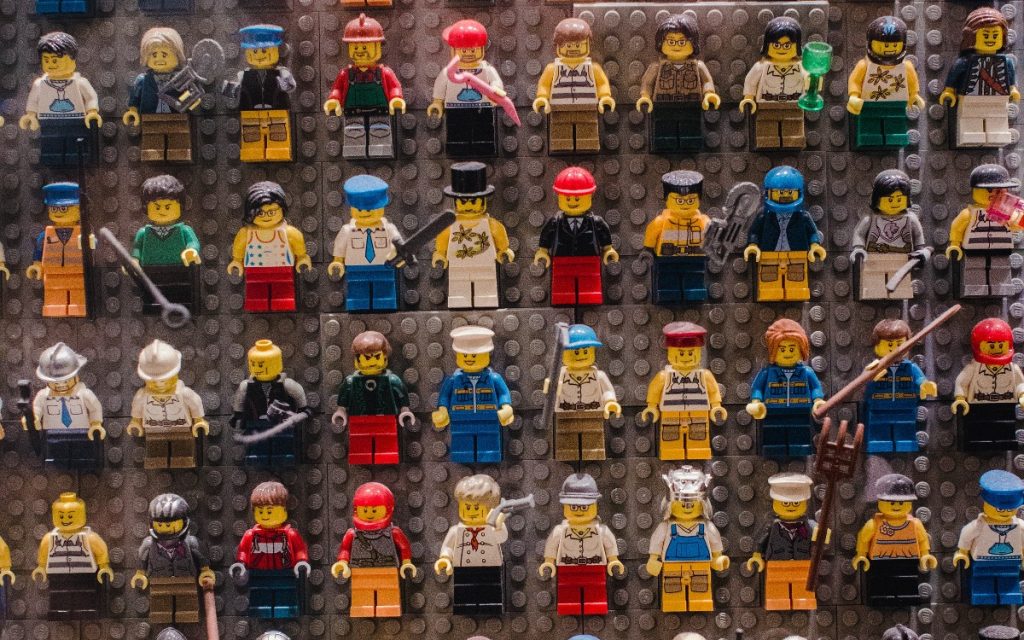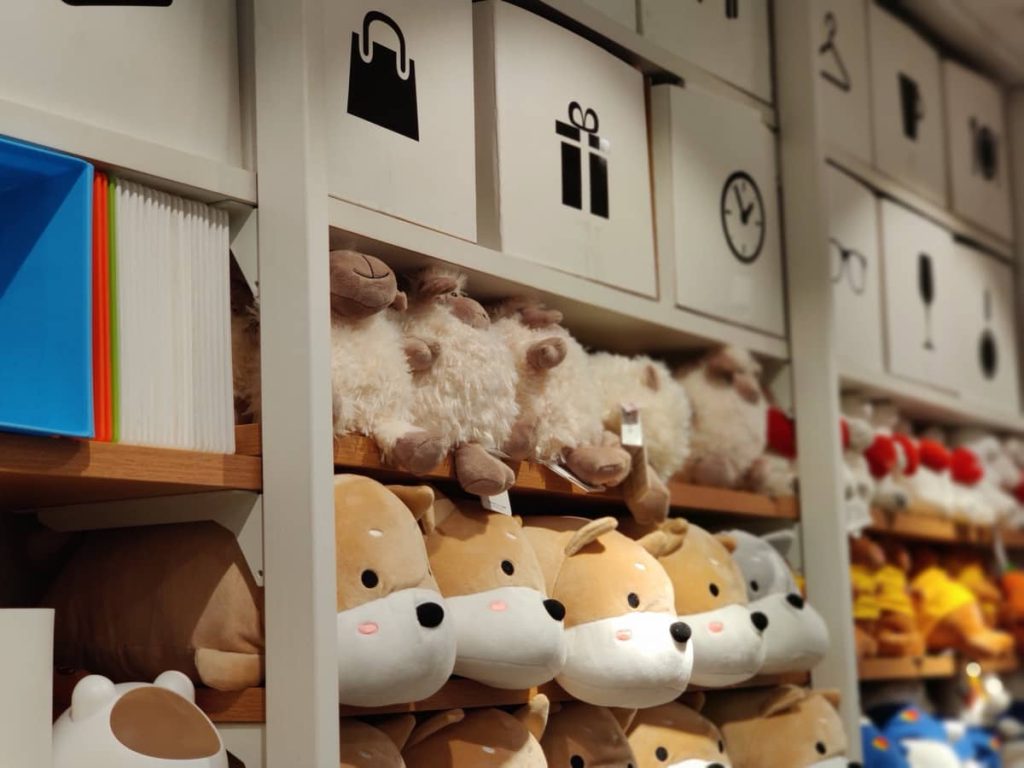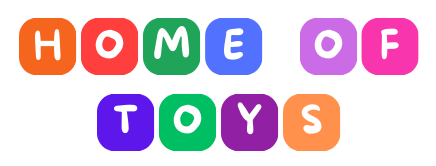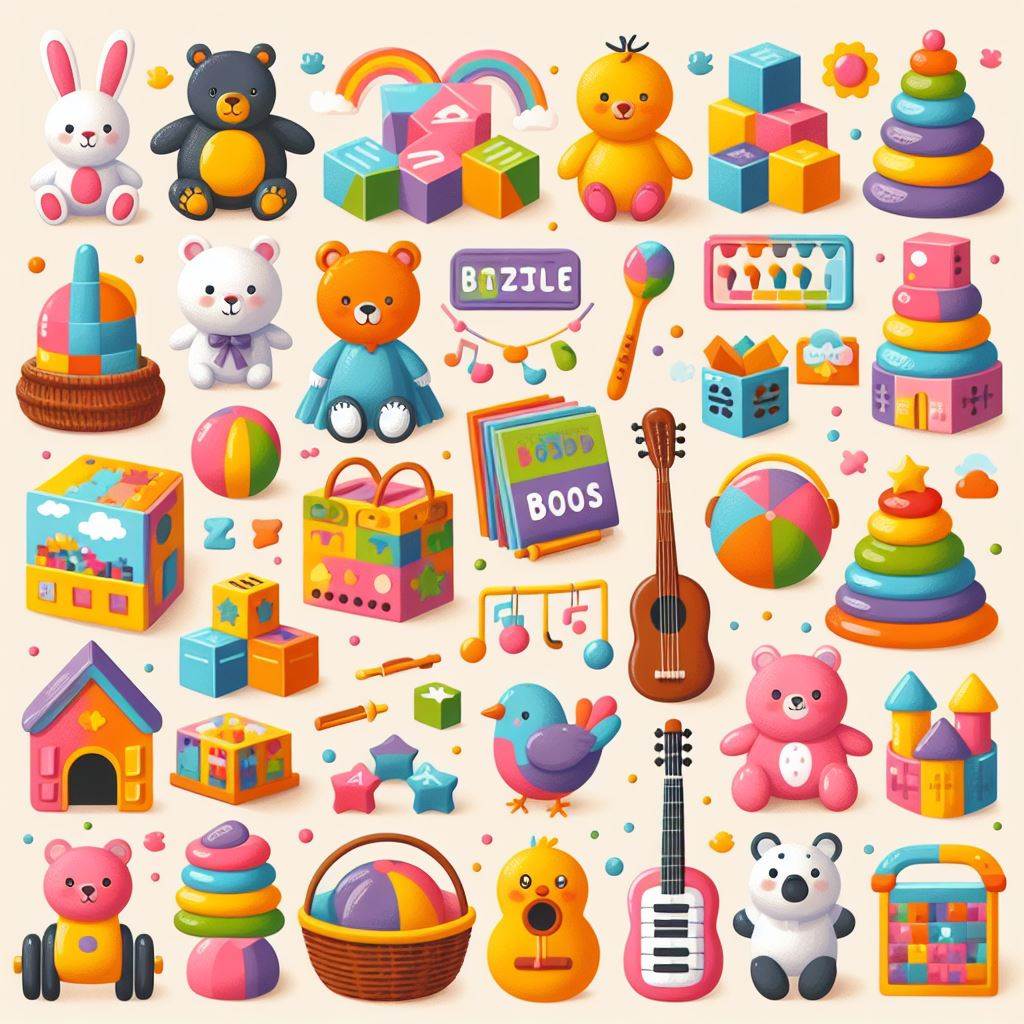
How to Organize and Store Your Child’s Toy Collection Effectively
In the realm of parenthood, a familiar scene often unfolds: a living room floor strewn with a colorful assortment of toys, a testament to your child’s vivid imagination and boundless creativity. While this delightful chaos is a hallmark of childhood, finding a balance between playtime exuberance and a tidy living space can be a challenge. Welcome to our guide on how to effectively organize and store your child’s treasured toy collection.
Beyond the satisfaction of a clutter-free home, there are deeper reasons for embarking on this organizational journey. A well-organized toy collection not only brings peace to your living environment but also fosters important life skills in your child, from responsibility and organization to decision-making and empathy. As we delve into the art of creating an orderly and engaging play area, you’ll discover strategies that not only simplify your daily routine but also enhance the joy and learning that playtime brings.
Join us as we explore the steps to assess, sort, and categorize toys, the secrets to maintaining an effortlessly tidy play space, and the creative ways to integrate organization into your child’s world. By the time you finish reading, you’ll be armed with a treasure trove of ideas to turn chaos into harmony, and to transform your child’s play area into a haven of creativity and exploration. Let’s dive in and unlock the secrets to mastering the art of organizing your child’s toy collection.
Assessing the Toy Collection
Amid the whirlwind of playdates and adventures, it’s easy for a collection of toys to quickly accumulate. Before diving into the world of organization, take a moment to assess the treasures your child has gathered over time.
Taking Stock of Existing Toys
Begin by gathering all the toys in one central location. This step allows you to visually grasp the extent of the collection and kickstarts the organization process. Lay out toys on the floor or designate a large table for easy viewing.
Identifying Favorites and Seldom-Used Items
As you survey the colorful landscape before you, observe your child’s interactions with each toy. Separate them into two distinct piles: those that are well-loved and frequently played with, and those that have fallen by the wayside.
This curation process serves as a valuable exercise in decision-making for your child. It also lays the foundation for streamlining the collection and creating a purposeful, engaging play space. Join us as we explore the next step: sorting and categorizing these cherished playthings for maximum efficiency and fun.
Assessing the Toy Collection
Amid the whirlwind of playdates and adventures, it’s easy for a collection of toys to quickly accumulate. Before diving into the world of organization, take a moment to assess the treasures your child has gathered over time.
Taking Stock of Existing Toys
Begin by gathering all the toys in one central location. This step allows you to visually grasp the extent of the collection and kickstarts the organization process. Lay out toys on the floor or designate a large table for easy viewing.
Identifying Favorites and Seldom-Used Items
As you survey the colorful landscape before you, observe your child’s interactions with each toy. Separate them into two distinct piles: those that are well-loved and frequently played with, and those that have fallen by the wayside.
This curation process serves as a valuable exercise in decision-making for your child. It also lays the foundation for streamlining the collection and creating a purposeful, engaging play space. Join us as we explore the next step: sorting and categorizing these cherished playthings for maximum efficiency and fun.

Sorting and Categorizing: Creating a Haven of Order
In the delightful chaos of childhood, where imagination knows no bounds, lies the challenge of maintaining an organized play space. Here in the heart of our journey toward a harmonious toy haven, we explore the art of sorting and categorizing—a cornerstone of effective toy collection management.
Creating Categories: A Path to Streamlined Play
Imagine a world where each toy finds its designated home, effortlessly inviting your child’s creativity. The key to achieving this lies in the art of categorization. As you embark on this task, consider the types of toys your child possesses. Puzzles, dolls, building blocks, cars, arts and crafts—these are but a few examples of the diverse treasures that may grace your child’s collection.
Begin by gathering toys of similar nature. Create clear categories that reflect your child’s interests and the type of play each group encourages. For example, assemble all puzzles into one category, dolls and action figures in another, and construction toys like building blocks in a separate group. This step streamlines playtime, making it easier for your child to find the perfect toy for their current adventure.
Involving Your Child: A Lesson in Decision-Making
As the architect of your child’s toy haven, involving them in the sorting and categorizing process not only imparts valuable life skills but also empowers them to take ownership of their play area. This collaborative effort not only fosters a sense of responsibility but also creates an opportunity for quality bonding time.
Invite your child to participate in the categorization process. As you place toys into their respective groups, engage them in conversations about each toy’s purpose and the adventures it can spark. Encourage them to make decisions about where each toy belongs and ask for their input on creating category labels. By involving them in these choices, you nurture their decision-making abilities and develop their sense of order.
Keep, Donate, Discard: Navigating the Toy Terrain
With categories established, the next step is to evaluate each toy’s place in your child’s collection. The “Keep, Donate, Discard” trio becomes your compass in this journey of decluttering and purposeful ownership.
Deciding What to Keep, Donate, or Discard
In your child’s eyes, every toy holds significance, each with a potential story or adventure. But as the collection grows, it’s essential to set boundaries that maintain the balance between play and order. Engage your child in conversations about the toys they’ve outgrown or no longer play with regularly. Encourage them to reflect on what brings them the most joy and excitement.
For toys that no longer serve their purpose or are no longer age-appropriate, the decision becomes clearer. When discussing the potential donation or discard of toys, approach the topic gently. Emphasize the idea of sharing with other children who may not have as many toys, turning the process into a lesson in empathy and giving.
Teaching Children About Sharing and Giving
The act of donating toys holds a powerful lesson for children—one of generosity, sharing, and compassion. Explain the concept of donating to those less fortunate and involve your child in choosing which toys they’d like to pass on. This process instills values of empathy and philanthropy from an early age, fostering a sense of connection to the broader community.
By involving your child in the “Keep, Donate, Discard” decisions, you transform the process from a simple tidying-up task into an enriching experience that shapes their character and understanding of the world.

Choosing Appropriate Storage Solutions: Where Order Meets Creativity
With a curated collection in hand, it’s time to turn our attention to the physical aspect of organization: storage. The right storage solutions not only maintain the play area’s tidiness but also contribute to an environment that fuels creativity and exploration.
Matching Storage to Toy Types
Just as every toy has its unique role in sparking your child’s imagination, each requires a suitable storage solution. Consider the different types of toys your child possesses and select storage options that accommodate their sizes and shapes. Small pieces, like puzzle parts or art supplies, benefit from clear bins that allow easy visibility, while larger toys may thrive on shelves or in bins.
Transparent containers hold a two-fold advantage: they provide quick access to contents and enable your child to make informed choices about what they want to play with. Additionally, labeling containers with words or images helps your child identify where each toy belongs, promoting a sense of order as they participate in maintaining the space.
Using Shelves, Bins, Baskets, and Labeled Containers
Variety is the spice of organization when it comes to storage solutions. Shelves showcase larger toys and make it easy for your child to pick and return items. Bins and baskets, strategically placed, create dedicated homes for specific toy categories. Labeled containers—whether with words or simple drawings—empower your child to take charge of tidying up, transforming a potentially daunting task into an engaging activity.
With toys effortlessly organized and storage solutions tailored to their needs, the stage is set for a play environment that fuels both imagination and order. But our journey doesn’t end here. In the upcoming sections, we’ll explore how to design a functional play area, implement a rotation system for continued excitement, and manage the influx of new toys with grace and intention.
Creating a Functional Play Area: Where Imagination Takes Center Stage
As the canvas for your child’s adventures, the play area should not only be organized but also designed with functionality and creativity in mind. In this section, we explore how to craft a play space that seamlessly merges organization and imaginative play.
Designating a Play Zone in Your Home
In the symphony of daily life, carving out a dedicated play zone for your child’s activities is pivotal. A designated space serves as a physical reminder that playtime is an essential part of their routine. Whether it’s a corner of the living room, a converted spare room, or a section of their bedroom, the goal is to create a distinct area where their imagination can flourish.
When selecting a play zone, consider natural light, proximity to family activity areas, and noise levels. Ensure it’s a space where your child can engage in creative play without feeling isolated from the rest of the household.
Incorporating Easy Access for Children
Imagine a world where children can independently choose their play companions without needing a grown-up’s assistance. Incorporating easy access to toys fosters autonomy and minimizes frustration for both children and parents.
Organize toys at a child’s eye level so they can see and reach what they want. Open shelves, bins, and baskets become vessels of opportunity, allowing your child to select their desired playmates with ease. As they engage in play, they learn to make decisions and practice tidying up after themselves—a valuable skill that will serve them well beyond childhood.
Rotation System for Variety: Breathing New Life into Play
Children thrive on novelty, and the concept of a toy rotation system brings an element of surprise and excitement to their playtime. By periodically swapping out toys, you can reignite their interest in long-forgotten favorites, creating a dynamic and engaging environment.
Benefits of a Toy Rotation System
The advantages of a rotation system extend beyond the immediate delight it brings. It helps prevent the overwhelming feeling that can come with an overabundance of toys, enabling your child to focus on a manageable selection at any given time. This approach also encourages creativity, as children find new ways to combine toys and invent scenarios with the changing cast of characters.
How to Rotate Toys to Keep Playtime Exciting
Start by creating different sets of toys to rotate. Keep one set accessible while storing the others out of sight. Consider using labeled bins or containers to make the rotation process smooth. Rotate the sets on a regular schedule—weekly or bi-weekly—depending on your child’s preferences.
During the rotation, involve your child in selecting the toys to be swapped. This not only empowers them but also gives them a sense of ownership over their play area. As the toys reappear after a rotation, watch your child’s eyes light up as they rediscover beloved playthings, ensuring playtime remains a dynamic and imaginative experience.
Managing the Influx of New Toys: Quality over Quantity
Gifts and new toys often hold a special place in a child’s heart, but they can also contribute to the challenge of maintaining an organized play space. To strike a balance between cherishing new additions and managing clutter, a thoughtful approach is essential.
Setting Guidelines for New Toy Additions
Communicate with family and friends about your preferred approach to new toys. Encourage them to consider your child’s interests and needs when selecting gifts. It’s perfectly acceptable to suggest specific types of toys or even non-material gifts like experiences or outings. This way, you ensure that new additions align with your child’s play preferences and contribute positively to their play area.
Encouraging Meaningful Gifts and Experiences
While toys have their place, the value of experiences and memories cannot be understated. Encourage loved ones to consider gifting experiences like museum visits, classes, or a day at the zoo. These gifts not only contribute to your child’s growth and development but also help create lasting memories.
As a family, you can also establish traditions that involve spending time together instead of relying solely on material gifts. This could include game nights, movie outings, or nature adventures. By emphasizing the significance of experiences, you teach your child that the joy of giving and receiving extends far beyond physical objects.
With a functional play area, a dynamic toy rotation system, and a thoughtful approach to new additions, you’re well on your way to mastering the art of organizing and storing your child’s toy collection. In the final sections of our journey, we’ll delve into creating an environment that encourages independent tidying and celebrating the milestones achieved through organized play. Stay tuned as we continue to explore the depths of harmonizing playfulness and order in your child’s world.
Organizing for Independence: Nurturing Responsible Play and Tidiness
As the conductor of the playtime orchestra, you hold the baton to guide your child toward independence and responsibility. In this section, we delve into strategies that empower your child to take ownership of their play area and actively participate in maintaining its order.
Designing a Setup That Encourages Tidying Up
A well-designed play area is more than just aesthetically pleasing—it’s a setup that naturally inspires tidying up. As you craft this space, keep accessibility and organization at the forefront of your mind.
Start by placing open shelves, bins, and baskets within your child’s reach. Each toy category should have its designated home, clearly labeled with words or images. This visual cue not only helps your child locate items but also makes it easier for them to return toys to their rightful places.
Incorporate furniture with hidden storage compartments—like benches or ottomans with built-in storage—to effortlessly stow away larger toys. When designing the setup, think like a child: create an environment where tidying up is a manageable task, rather than a daunting chore.
Teaching Kids to Clean Up After Playtime
The art of tidying up is a skill that sets the foundation for a well-organized life. Encouraging your child to clean up after playtime is more than just a task—it’s an opportunity to instill responsibility and a sense of accomplishment.
Make tidying up a routine part of playtime. Set aside a few minutes at the end of each play session for cleanup. Approach this task positively, emphasizing the benefits of a tidy space and the joy of rediscovering organized toys the next time they play.
Break down the process into manageable steps, guiding your child through the act of returning toys to their designated spots. Praise their efforts and offer assistance when needed, gradually allowing them to take the lead as they become more adept at tidying up independently.
DIY Toy Storage Ideas: Infusing Creativity into Organization
Organization doesn’t have to be all about utilitarian bins and shelves—it can also be a canvas for creativity. DIY toy storage ideas not only add a personal touch to the play area but also involve your child in the process of crafting functional yet appealing organizers.
Repurposing Items for Creative Storage
Look around your home for items that can be repurposed as unique toy storage solutions. Old crates can become shelves for books and stuffed animals, while a tiered fruit basket can hold art supplies. By thinking outside the box, you not only minimize waste but also infuse character into the play area.
Involve your child in the repurposing process. Let them help paint or decorate the chosen items, transforming them into playful and imaginative organizers. This collaboration fosters a sense of pride and ownership in the play space, enhancing their connection to the organized environment.
Crafting Personalized Toy Organizers
DIY projects offer an excellent opportunity to bond with your child while creating practical solutions. Consider crafting personalized toy organizers together. Simple projects like fabric bins, hanging organizers, or wall-mounted shelves can be tailored to your child’s preferences and play needs.
As you work on these projects, explain the purpose of each organizer and how it contributes to maintaining an orderly play area. Your child will not only appreciate the end result but also gain a deeper understanding of the thought and effort that goes into creating a functional and organized space.
With your child by your side, infuse creativity and personalization into the organization process. As you move forward, the play area will be a testament to both order and imagination—an environment that reflects your child’s unique personality and supports their growth.
As our exploration continues, we’ll uncover the final pieces of the puzzle, from the practical tips for ongoing maintenance to fostering a positive attitude toward organization. Let’s press on and discover the rewarding conclusion of this journey toward a harmonious play space.
Maintenance and Periodic Cleanouts: Sustaining Order and Clarity
Creating an organized play area is a triumph, but the journey doesn’t end there. In this section, we explore how to uphold the order you’ve cultivated, ensuring that the play space remains a haven of creativity and exploration.
Regular Tidying Tips to Maintain Order
As with any endeavor, consistency is key to maintaining the organized play area. Implementing simple tidying habits as part of your child’s routine can prevent clutter from accumulating. Here are a few tips to consider:
- Five-Minute Tidy-Up: Set a timer for five minutes each day and encourage your child to tidy up as much as they can in that time. This quick burst of effort can make a significant difference over time.
- One In, One Out: Teach your child the concept of balance by implementing a “one in, one out” rule. When a new toy enters the collection, an old one must be donated or discarded. This helps prevent the accumulation of excess items.
- End-of-Day Ritual: Before bedtime, make it a habit to return all toys to their designated homes. This practice not only maintains a tidy space but also sets the stage for the following day’s play.
Scheduled Cleanouts to Keep Clutter in Check
Even with the best intentions, toys can sometimes accumulate beyond what’s manageable. That’s where scheduled cleanouts come into play. Designate specific times throughout the year to reassess the toy collection and make decisions about what to keep, donate, or discard.
Seasonal transitions, birthdays, and major holidays can serve as natural milestones for cleanouts. As you involve your child in the process, you reinforce the principles of responsible ownership and the importance of keeping their play area organized.
A Positive Approach to Organization: Cultivating Joy in Order
Organizing doesn’t have to be a chore; it can be a journey filled with positivity and growth. In this section, we delve into strategies for fostering a positive attitude toward organization that extends beyond the play area.
Fostering a Positive Attitude Towards Organization
When children associate organization with positive experiences, they’re more likely to embrace it willingly. Approach organization with enthusiasm, and convey its benefits in terms of a stress-free play environment, easy access to toys, and the satisfaction of a job well done.
Involve your child in decision-making when it comes to arranging and organizing the play space. Their input and ownership of the process empower them and emphasize that organization is a collaborative effort.
Celebrating Milestones and Efforts
Each step toward an organized play area is a milestone worth celebrating. Recognize and praise your child’s efforts, no matter how small. Acknowledge their role in maintaining the order they’ve worked so hard to create.
Consider setting up a “tidy-up treasure chest” filled with small rewards like stickers, stamps, or small toys. Each time your child completes a tidy-up session or accomplishes a cleanout, they get to choose a reward from the treasure chest. This approach infuses an element of fun and anticipation into the process and reinforces the positive association with organization.
As you encourage a positive attitude toward organization, you’re imparting life skills that extend far beyond the play area. The value of responsibility, discipline, and the ability to find joy in order will accompany your child as they navigate various aspects of life.
In Conclusion: A Harmonious Play Haven
Congratulations on embarking on this journey of organizing and maintaining your child’s play area. Through designated zones, creative storage solutions, rotation systems, and fostering positivity, you’ve created a space where both order and imagination thrive. By nurturing responsibility and instilling a positive attitude, you’ve laid the foundation for lifelong skills that go beyond keeping toys tidy.
As you continue to integrate these strategies into your family’s routine, remember that the journey is ongoing. Embrace the moments of collaboration, celebrate the milestones, and cherish the memories created in this organized play haven. With the skills and insights gained from this guide, you’re equipped to navigate the delightful balance of playfulness and order, creating an environment that nurtures your child’s growth and joy.
Crafting Harmony in Play and Order
In the tapestry of childhood, where laughter and curiosity intertwine, you’ve embarked on a journey that harmonizes the world of play and the realm of order. From the first step of assessing your child’s toy collection to creating a functional and personalized play space, from instilling responsibility through tidying routines to fostering a positive attitude toward organization, you’ve woven a narrative that celebrates both creativity and structure.
As you stand in the midst of your child’s organized play area, you’re not just witnessing an environment of toys neatly arranged—you’re witnessing a canvas where possibilities come alive. This organized haven reflects more than an absence of clutter; it’s a reflection of the care, thought, and love you’ve poured into crafting a space that nurtures growth and joy.
Remember that this journey isn’t solely about toys and tidiness—it’s about nurturing values that extend into every facet of life. The lessons learned through organizing play areas—the power of decision-making, the beauty of giving, the delight in discovery—are gifts that continue to unfold as your child matures.
Through your guidance, your child gains a deeper appreciation for the order that underpins the world around them. They learn that order need not stifle creativity; rather, it provides the canvas on which their imagination can truly flourish.
As you navigate the days ahead, let this journey be a reminder that the journey is ongoing. The act of organization is not a one-time event but a practice that evolves with your child’s growth and changing interests. Embrace the moments of joy as you witness your child engrossed in creative play, and embrace the moments of accomplishment as they take ownership of their space.
Thank you for embracing this voyage of harmony between play and order. May the memories made in this vibrant, organized play haven be lasting and meaningful. As you continue to create a balance that nurtures your child’s spirit and fosters a sense of belonging, may your days be filled with laughter, adventure, and the beauty of a world crafted with love and intention.


